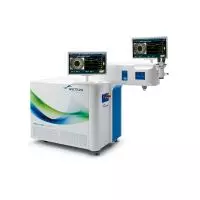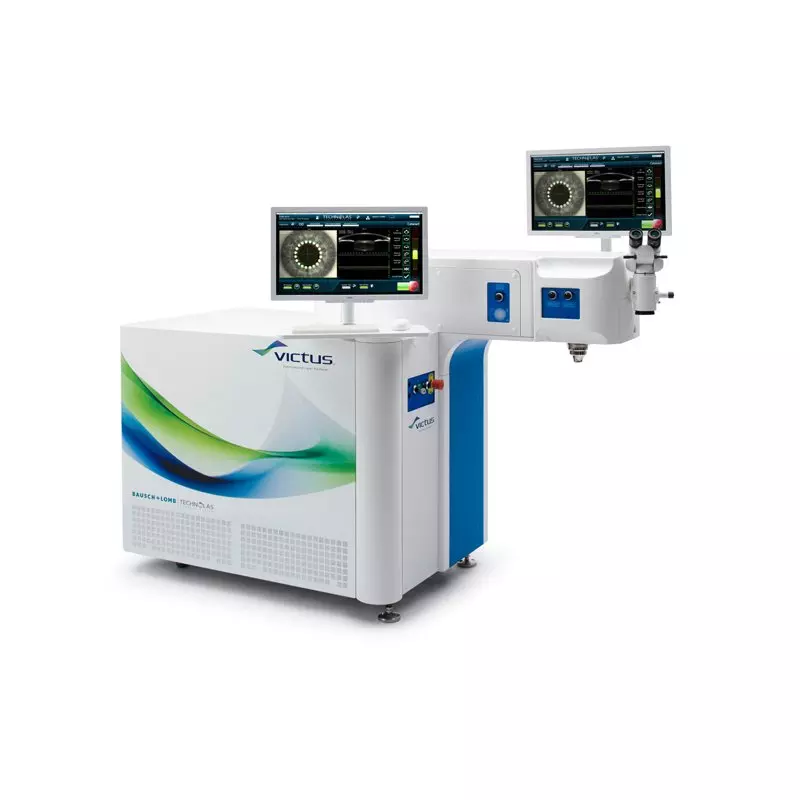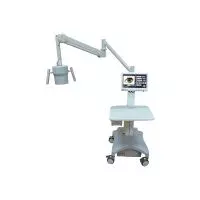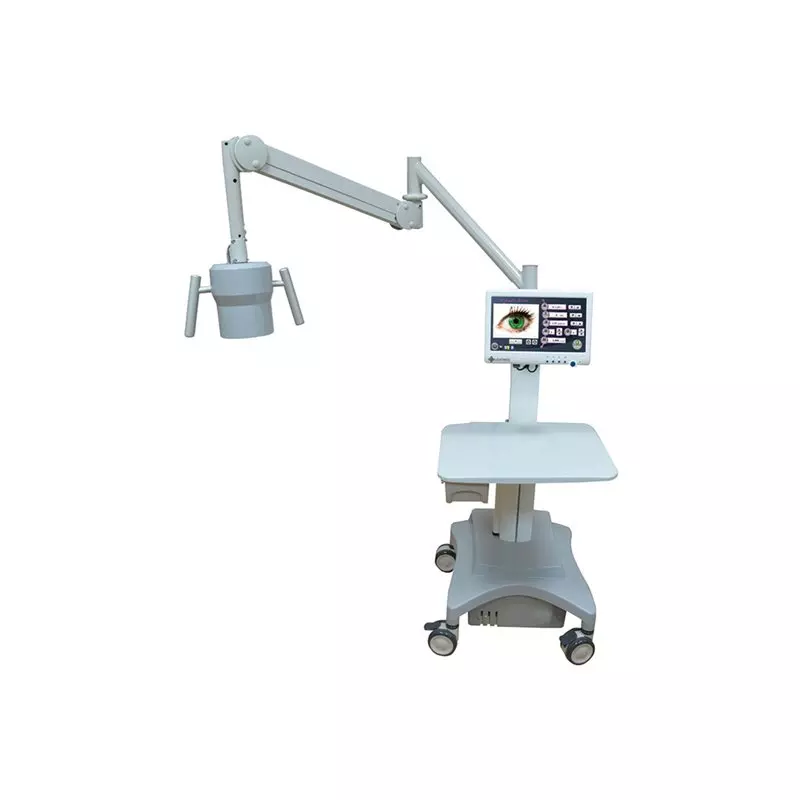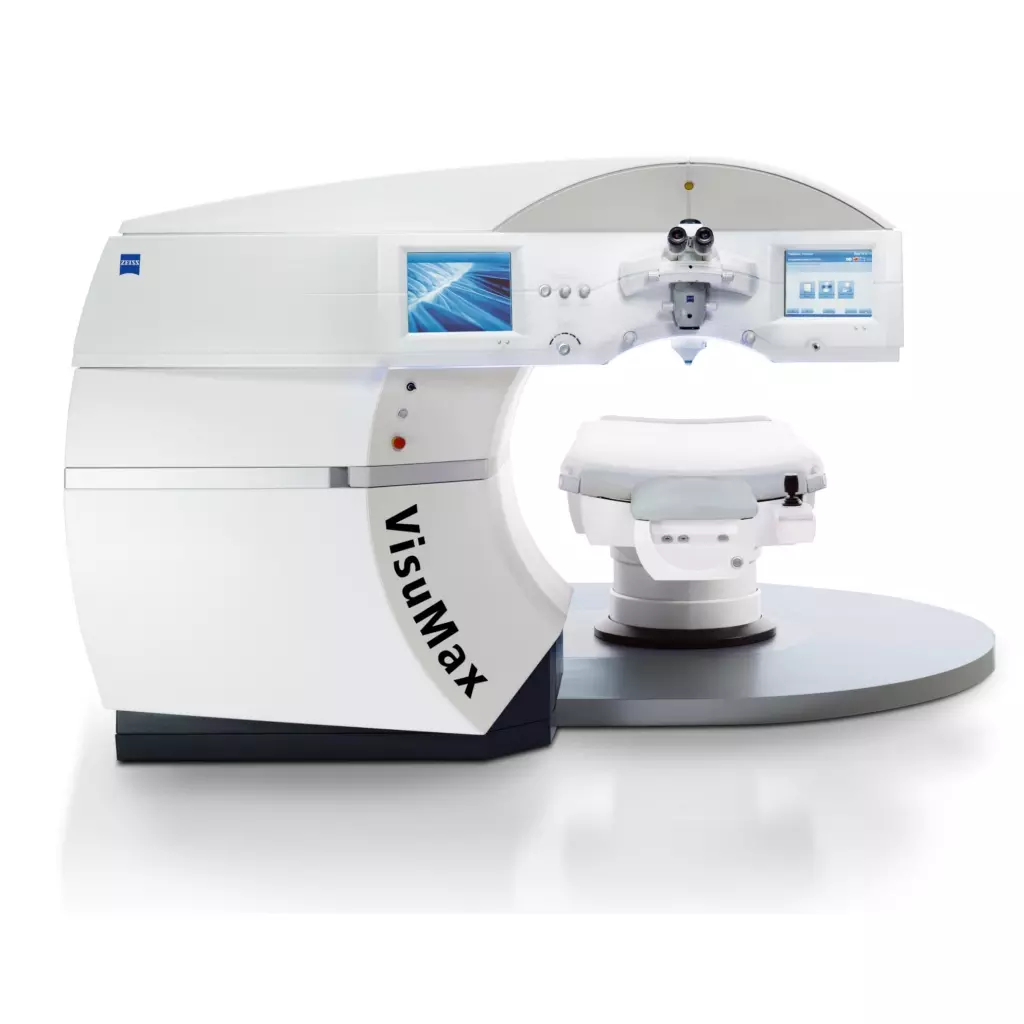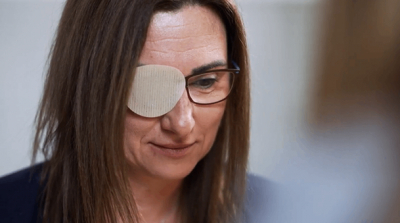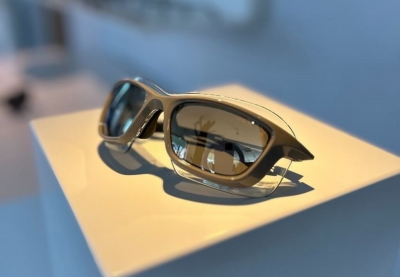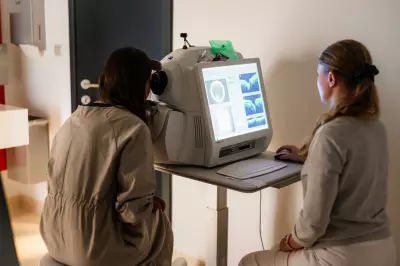Healthy vision

Vision disorders

Keratoconus
Keratoconus is a progressive disease of the cornea caused by a congenital defect of the collagen structure which can lead to a significant deterioration in vision.
What’s the problem?
The cornea
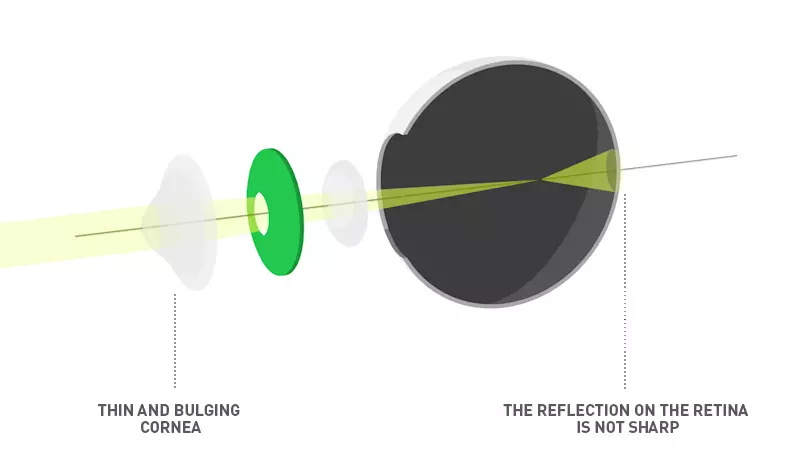
becomes thinner and bulges when affected by keratoconus, leading to a significant deterioration in vision. The course of the disease is linked to a gradual increase in astigmatism (cylindrical dioptres) and often results in changes to spherical dioptres
In advanced stages, these dioptres are very difficult to correct using eyeglasses. Modern medicine has so far been unable to cure keratoconus completely, but it is able to slow it down or halt its progress.

What treatment is available for keratoconus?
Today, many more options are available for treating keratoconus than in the past, and whether they are suitable or not depends on the stage of the keratoconus.
SCLERAL CONTACT LENSES
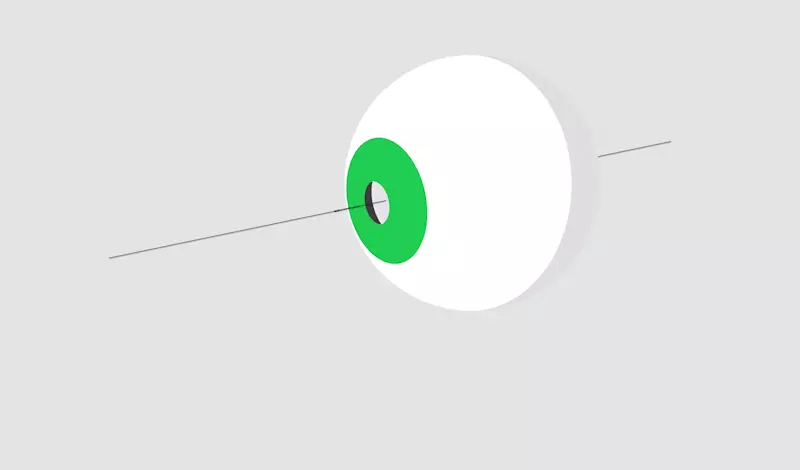
If diagnosed early, keratoconus can be corrected by the application of special contact lenses which can alter the irregular shape of the cornea by creating pressure on it, or forming a “new surface” of the cornea, which improves vision.
These contact lenses do not cure the disease, but at least slow down its progress.
- The scleral contact lens touches the white of the eye and forms a space filled with liquid on the cornea without touching it
- The liquid between the lens and the cornea reduces the irregularity of the cornea thus ensuring an even refraction of light into the eye
- Each scleral contact lens is made to measure for the patient

CROSSLINKING
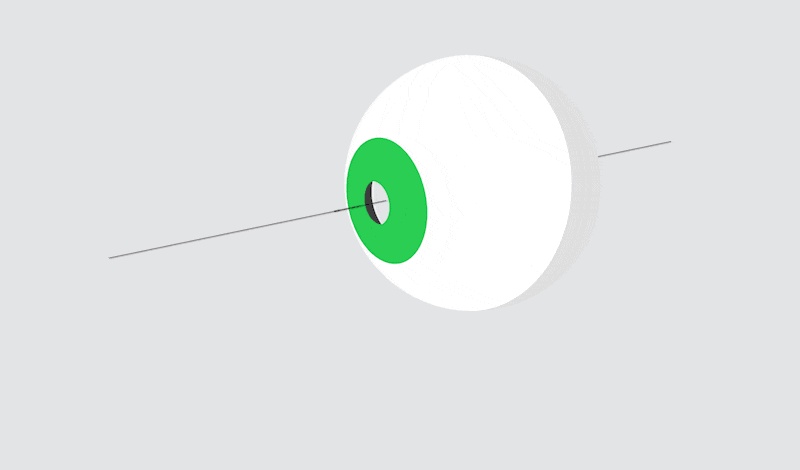
At present, keratoconus is most often stabilised using the crosslinking (CXL) method. In our clinic, we use a modern method to treat keratoconus: accelerated crosslinking. This consists in irradiating the corneal tissue with a UV-A lamp and applying a riboflavin solution. In five minute – or shorter – intervals, we apply drops of the riboflavin solution onto the cornea until it is saturated as required. We then continue to irradiate it with a UV-A for 10 minutes. The whole procedure takes approximately 60 minutes.
- After crosslinking, the eye can be photophobic for 2 to 4 days.
- The procedure can be carried out by removing the epithelial part of the cornea, or by keeping it.
- If the epithelial part of the cornea is removed, the patient can experience eye watering and the sensation of sharp pain in the eye.

INTRASTROMAL CORNEAL RINGS
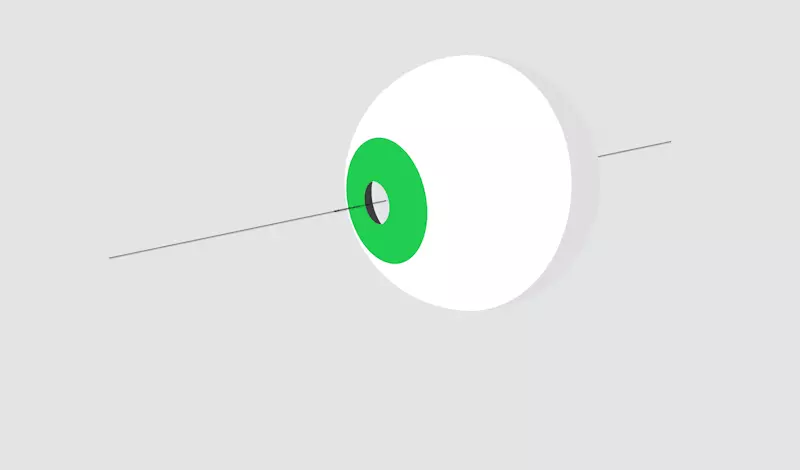
The treatment of keratoconus by crosslinking can also be combined with instrastromal corneal rings implants (keraring).
This is a technique where one or two curved segments/•• are implanted, after shaping a tunnel in around 80% of the thickness of the cornea. The number and shape of the segments is calculated especially for each patient. Ring implants even out and stabilise the cornea.
A secondary effect can be an improvement in vision.
- The whole procedure takes around 15 to 30 minutes
- We use a femtosecond laser to make the tunnels needed to implant the corneal rings
- After the procedure, a contact lens is placed on the cornea
- The eye can be photophobic for 2 to 4 days.

Is surgery right for you?
To help you find your way around, we have prepared a brief overview of surgeries available for different types of refractory disorders or diseases. Find out which type of surgery is best for you.
Complete price list
| SCLERAL LENSES | VŠZP | DÔVERA | UNION |
|---|---|---|---|
| APPLICATION OF HARD CONTACT LENSES | 50€ | 50€ | 50€ |
| HARD CONTACT LENSES - 1 EYE | 350€ | 350€ | 350€ |
| HARD CONTACT LENSES - 2 EYES | 560€ | 560€ | 560€ |
| HYBRID CONTACT LENS - 1 EYE | 310€ | 310€ | 310€ |
| HYBRID CONTACT LENS - 2 EYES | 510€ | 510€ | 510€ |
| HARD CONTACT LENS ESCLERA - 1 EYE | 640€ | 640€ | 640€ |
| HARD CONTACT LENS ESCLERA - 2 EYES | 1190€ | 1190€ | 1190€ |
| CROSSLINKING | VŠZP | DÔVERA | UNION |
|---|---|---|---|
| ACCELERATED CROSSLINKING |  |  |  |
| ACCELERATED CROSSLINKING EXTRA | 90€ | 90€ | 90€ |
| INSTRASTROMAL RINGS | VŠZP | DÔVERA | UNION |
|---|---|---|---|
IMPLANTATION OF INTRASTROMAL RINGS WITH THE USE OF A FEMTOSECOND LASER | 90€ | 90€ | 90€ |
IMPLANTATION OF INTRASTROMAL RINGS WITH THE USE OF A FEMTOSECOND LASER EXTRA | 180€ | 180€ | 180€ |
 The additional price for the lens as requested by the patient following the consultation with a doctor ranges from 0 do 490 €.
The additional price for the lens as requested by the patient following the consultation with a doctor ranges from 0 do 490 €.| CORNEAL TRANSPLANT | VŠZP | DÔVERA | UNION |
|---|---|---|---|
| ANTERIOR LAMELLAR KERATOPLASTY |  |  |  |
| POSTERIOR LAMELLAR KERATOPLASTY |  |  |  |
| CORNEAL OVERLAY WITH AMNIOTIC MEMBRANE |  |  |  |
To help you find your way around, we have prepared a brief overview of surgeries available for different types of refractory disorders or diseases. Find out which type of surgery is best for you.











